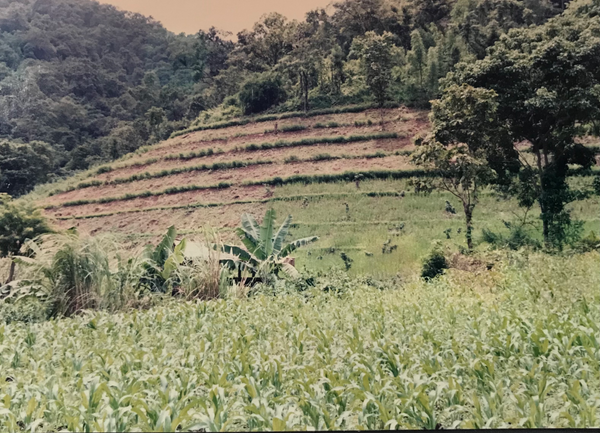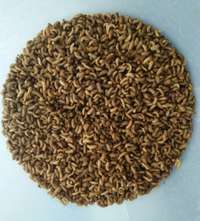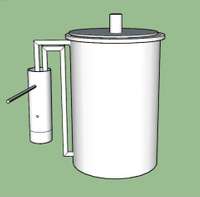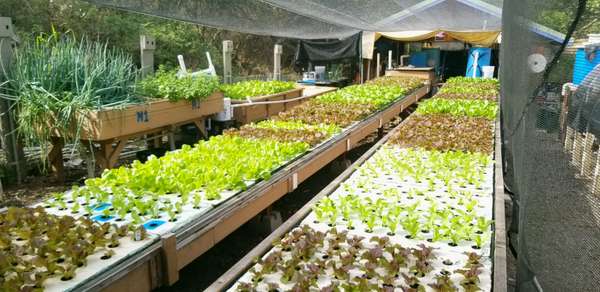ECHO Asia Note Articles
ECHO Asia Notes is a quarterly technical e-bulletin containing articles of interest to agriculture and community development workers in Asia.
This list contains articles from ECHO Asia Notes, many of which have been translated into regional languages.
101 Issues in this Publication (Showing issues 48 - 44) Next
A ‘Successful Failure’: Introducing SALT Technology in Northern Thailand - 01-03-2022
- Also available in:
- ភាសាខ្មែរ (km)
- Tiếng Việt (vi)
- हिन्दी भाषा (hi)
- English (en)
- ไทย (th)
- Bahasa Indonesia (id)
- 汉语 (zh)
- မြန်မာ (my)
Dave had come to Thailand two years prior exactly for the opportunity that he was now presented with. Ethnic minority hillside farmers had been experiencing lower crop yields even with their efforts in using more chemical fertilizer.

Playing with Water Wheels: Exploring Low-Cost Methods for Pumping Irrigation Water - 01-03-2022
- Also available in:
- ភាសាខ្មែរ (km)
- English (en)
- မြန်မာ (my)
- 汉语 (zh)
- Bahasa Indonesia (id)
- ไทย (th)
- हिन्दी भाषा (hi)
- Tiếng Việt (vi)
As we began looking into sustainable and alternative solutions for pumping water, our team began ‘playing around’ with the idea of water wheels for the supply of irrigation water to low elevation farmland. We initially began with research and testing of a pump called a Sling Pump, but gave up after testing several prototypes. Challenges included difficulty with DIY assembly, cost, specialized parts, and ultimately its efficiency.

Establishing a Scaled-Up Black Soldier Fly System - 01-09-2021
- Also available in:
- ភាសាខ្មែរ (km)
- မြန်မာ (my)
- ไทย (th)
- Bahasa Indonesia (id)
- हिन्दी भाषा (hi)
- 汉语 (zh)
- Tiếng Việt (vi)
- English (en)
Critical to the success of a small-scale farm is its ability to turn on-farm waste into alternative value-added products. By integrating the Black Soldier Fly (Hermetia illucens) on the farm, small-scale enterprises can do just that. Taking common waste products such as food scraps and manure, the Black Soldier Fly can be used to efficiently convert raw waste materials into high-protein feed sources for livestock, while simultaneously producing a by-product suited for amending soils.
illucens) on the farm, small-scale enterprises can do just that. Taking common waste products such as food scraps and manure, the Black Soldier Fly can be used to efficiently convert raw waste materials into high-protein feed sources for livestock, while simultaneously producing a by-product suited for amending soils.
An Innovative ‘Do-All’ Biochar Burner Design - 01-09-2021
- Also available in:
- 汉语 (zh)
- English (en)
- Bahasa Indonesia (id)
- ភាសាខ្មែរ (km)
- ไทย (th)
- Tiếng Việt (vi)
- မြန်မာ (my)
- हिन्दी भाषा (hi)
[Editor’s Note: There are many biochar burner designs currently in existence, intended for various scales and end uses in mind. This particular design has
I Suspect ASFV on my Farm - 01-06-2021
- Also available in:
- English (en)
- မြန်မာ (my)
- Bahasa Indonesia (id)
- Tiếng Việt (vi)
- ไทย (th)
- 汉语 (zh)
- हिन्दी भाषा (hi)
- ភាសាខ្មែរ (km)
What Steps Should I Take?
African Swine Fever Virus: Overview and Prevention on the Small Farm - 01-06-2021
- Also available in:
- English (en)
- ភាសាខ្មែរ (km)
- ไทย (th)
- မြန်မာ (my)
- 汉语 (zh)
- Bahasa Indonesia (id)
- Tiếng Việt (vi)
- हिन्दी भाषा (hi)
As global prosperity has risen, so too has demand for animal protein. Pork has become the most consumed meat of terrestrial animals at 37% of total global meat consumption (Beltrán-Alcrudo et al., 2017). Pork production most drastically increased in Asia (Figure 1), accounting for as much as 55% of global pork production in 2018 (FAOSTAT, 2018). Global gross pork production value has hovered around 300 billion USD since 2011 (FAOSTAT, 2020). In 2018 this all changed with the onset of the African Swine Fever Virus (ASFV) in Asia. This deadly virus has decimated pig populations and brought significant reductions in global pork production and pork protein consumption. It is estimated that upwards of 25% of the world’s pig population has succumbed to ASFV over the past two years (Niederwerder et al., 2020).
[Example] Small Farm Biosecurity Plan - 01-06-2021
- Also available in:
- ភាសាខ្មែរ (km)
- English (en)
- မြန်မာ (my)
- 汉语 (zh)
- Bahasa Indonesia (id)
- ไทย (th)
- Tiếng Việt (vi)
- हिन्दी भाषा (hi)
[Editor’s Note: This is only one example of a biosecurity plan for small-scale pig operations in one region and may be used as a template. It is unlikely that all measures will be practical or appropriate for your context and should therefore be adapted according to the needs and priorities of your farm. It is recommended that that the adoption of any such farm plan be the result of farm-wide discussions with your team for maximum buy-in, understanding, and practicality.]
Stingless Beekeeping (Meliponiculture) on Java
- Also available in:
- Bahasa Indonesia (id)
- ไทย (th)
- 汉语 (zh)
- English (en)
- ភាសាខ្មែរ (km)
- မြန်မာ (my)
- Tiếng Việt (vi)
Stingless Beekeeping, or Meliponiculture, is the keeping of bees from the tribe Meliponini. Stingless bees comprise hundreds of species with there being a possible 89 confirmed species in Subtropical/Tropical Asia and Australia alone (Rasmussen, 2008); and, while many are able to produce honey, they are a completely different Tribe of species from domesticated honey bees (Apis mellifera and Apis cerana indica). While stingless bees do still have stingers, they are small and underdeveloped, rendering them unable to sting a person—which is how they earn their namesake. They are, however, still able to bite (though by some accounts: not painful) and will try and irritate the honey robber by attacking the eyes or ears. Stingless bees have been kept for thousands of years, most notably in the New World Tropics, where there were no honeybees before their introduction by European colonists and explorers. Stingless bees have received much less attention in the form of research and development than honeybees due to a number of factors.
Production of Vegetable Fern (Diplazium esculentum Reytz.) Under Varying Levels of Shade - 01-02-2021
- Also available in:
- Tiếng Việt (vi)
- English (en)
- ភាសាខ្មែរ (km)
- မြန်မာ (my)
- ไทย (th)
- 汉语 (zh)
- Bahasa Indonesia (id)
- हिन्दी भाषा (hi)
Several species of edible ferns exist around the world, ranging from the tropics to more temperate regions, and most commonly include the bracken ferns (Pteridium spp.), ostrich fern (Matteuccia struthiopteris), and the Stenochlaena spp. ferns. However, the focus of this study is on the vegetable fern (Diplazium esculentum Reytz.), a tropical perennial vegetable crop typically found growing in the Asia and Oceania regions. Sakai et.al. (2016) categorize this edible vegetable fern as a Non-Timber Forest Product or NTFP. It is a regionally significant vegetable crop in India, Bangladesh, Thailand, Malaysia, Philippines, and the US state of Hawaii (Lin et al., 2009). The young tender fronds of the fern (commonly referred to as ‘fiddleheads’) are typically eaten fresh, boiled, blanched, or cooked in curries, depending on the region in which they are consumed (Duncan, 2012).
The Martinez Airlift Pump: Lifting Water with Air
- Also available in:
- Bahasa Indonesia (id)
- Tiếng Việt (vi)
- မြန်မာ (my)
- ភាសាខ្មែរ (km)
- 汉语 (zh)
- ไทย (th)
- English (en)
Water pumps have long been a key component of the small-scale farm and are valuable labor-saving devices that offer a variety of practical applications. Pumps of different types are regularly used for water storage & filtration, irrigation, aquaculture systems, and more. While convenient and useful, pumping water does come at a cost – from the necessary consumption of energy, to the regular maintenance of moving parts. However, new developments in appropriate pump technologies offer options that can save money, increase reliability, improve longevity of equipment, and offer certain other benefits that to be presented in this article.










